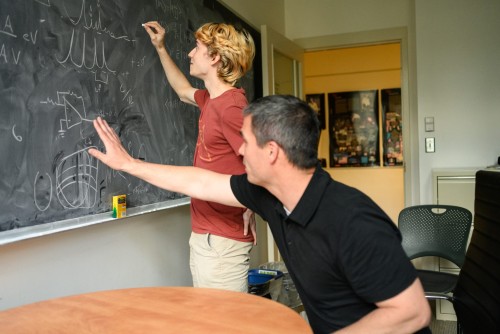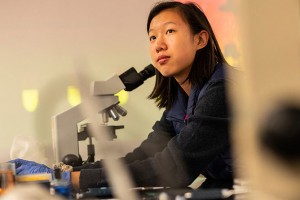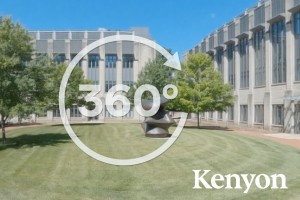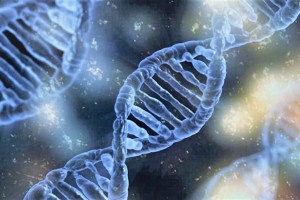Studying Physics at Kenyon
Physics students develop the analytical, computational and experimental techniques necessary to apply the principles of nature to a broad range of theoretical and experimental problems. With small class sizes and a strong research program, students have extraordinary access to physics faculty who are active researchers in the field.
-

Shaping Scientists
Kenyon ranks eighth in the country (and ahead of every Ivy) for the proportion of STEM grads to earn a doctorate in a STEM field.
-
110students a year pursue College-funded research projects in the humanities, natural sciences and social sciences.
-

Kenyon 360: Science and Math
Get an insider's view of the S'Quad, the bustling home of Kenyon's math and science departments.
-
$1Mgrant from the the Howard Hughes Medical Institute
The grant is one of several that Kenyon scientists have earned to foster a more inclusive and diverse scientific community.
Featured Courses
A Certain Slant on Light
For centuries, scientists and artists have pondered light, including rainbows, shadows, colors and mirages. Explore the theory that explains these beautiful phenomena, including how light can be modelled as a ray, wave or particle, and how these ideas explain concepts like reflection, refraction, scattering and more.
Introduction to Computational Physics
Computational physics draws from the disciplines of physics, computer science and applied mathematics in order to solve complex real-world problems. Using a variety of computational methods, students model natural phenomena and solve equations using the computer language C, a widely used high-level programming language.
Rocket Science
From the history of astronautics to the missiles and space vehicles of today to future developments in space exploration, discover the basic concepts of rocket propulsion and space flight—aka “rocket science”—including Newton’s laws of motion, ballistics, aerodynamics, the physics and chemistry of rocket motors, orbital mechanics and beyond.
Astrophysics and Particles
From particle accelerators, to galaxies and stars, to the big bang, high-energy particle physics and astrophysics address the sciences’ most fundamental questions. Working within the combined fields of cosmology, astrophysics, phenomenological particle physics, relativity and field theory investigate the science behind the big bang, cosmic inflation, general relativity, galactic evolution and more.
Hayes Hall
Kenyon College
Gambier, Ohio 43022



